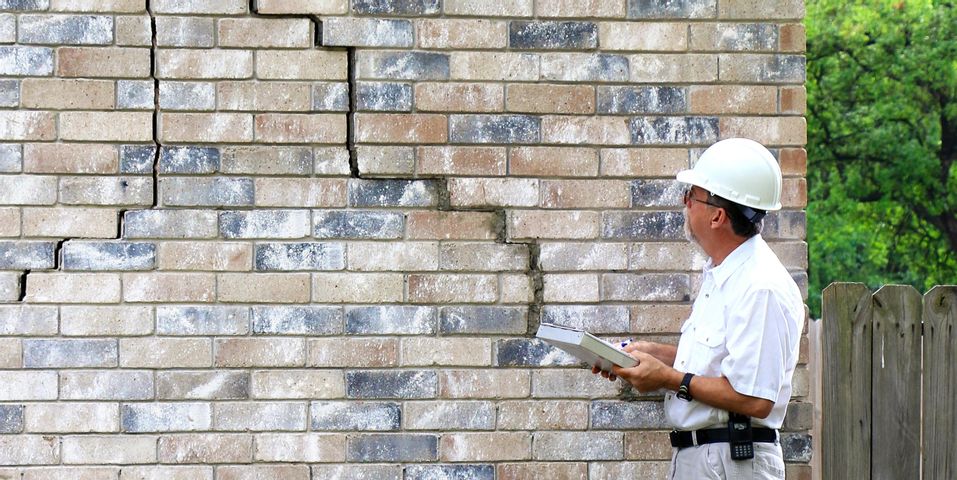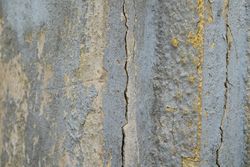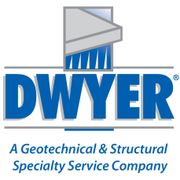A Guide to Foundation Cracks & What They Mean

Unusual wall cracks are a sign that you’ll need professional foundation repairs. But these cracks aren’t all the same — the direction and size of the fissure can identify what’s causing the problem. To protect your home and prevent the problem from growing worse, here are four common types of foundation cracks and how to address them.
4 Types of Foundation Cracks & Their Meaning
1. Horizontal
Running side-to-side, horizontal cracks often appear in buildings that utilize brick or concrete block construction. Horizontal fissures are particularly dangerous, as they indicate that the foundation wall is bowing inward, putting your structure at risk of collapse. Typically, poor drainage or improper backfill support places additional pressure against the wall and causes this problem.
Depending on the extent of the damage, foundation repair professionals can prevent further deterioration by reinforcing the bowed walls with strapping or posts. In other cases, anchors in the soil may be used to gently pull the wall outward.
2. Vertical
 Unlike horizontal cracks, vertical fissures are rarely serious and are actually quite common in the years following construction. They develop as the home settles, placing pressure on the underlying concrete foundation.
Unlike horizontal cracks, vertical fissures are rarely serious and are actually quite common in the years following construction. They develop as the home settles, placing pressure on the underlying concrete foundation.
While vertical cracks do not pose structural risks, keep an eye on them. If moisture begins to seep through the opening, have a foundation repair team seal the area with an injectable solution.
3. Diagonal
Diagonal cracks are similar to vertical fractures but run up-and-down at an angle between 30 and 75 degrees. This damage typically occurs when the soil settles under the home unevenly. For example, if the house is on a hill, one corner of the property may droop and eventually cause a diagonal crack. Just as with vertical cracks, diagonal fissures are repaired by using an injectable sealant.
4. Step
These fractures often appear in brick walls above the foundation. Essentially, these fissures form around the edges of the brick within the mortar, creating a step-like crack. This damage comes from the same differential settling that leads to diagonal cracking.
While not all step cracks are serious, they should always be inspected by a professional. If the damage is restricted to the mortar, sealing may be all that’s needed. However, if the bricks are displaced, you may need more extensive foundation repair to prevent further deterioration.
Whether you’ve noticed worrisome wall cracks or other signs of foundation damage, don’t wait to seek a professional opinion. Instead, turn to the specialists at The Dwyer Company for comprehensive foundation repair in the Cincinnati, OH and Northern Kentucky areas. Providing premium-grade solutions since 1973, this team is equipped to correct bowed walls, perform underpinning, provide slabjacking, and other foundation repairs. To learn more about their services, visit this contractor online. For free estimates, call (513) 777-0998 to reach the West Chester, OH, office, (859) 231-0998 for the Lexington, KY, location, or (502) 489-5438 to speak with the team in Louisville, KY.
About the Business
Have a question? Ask the experts!
Send your question

